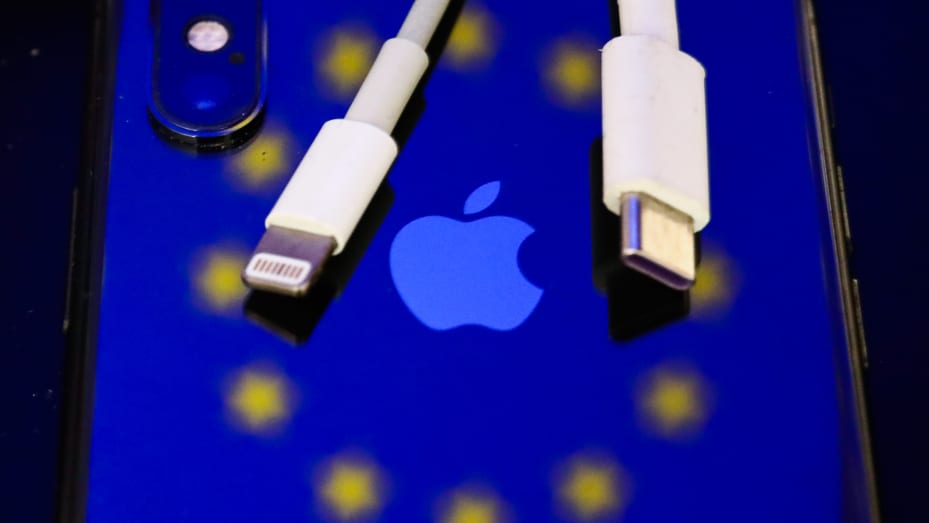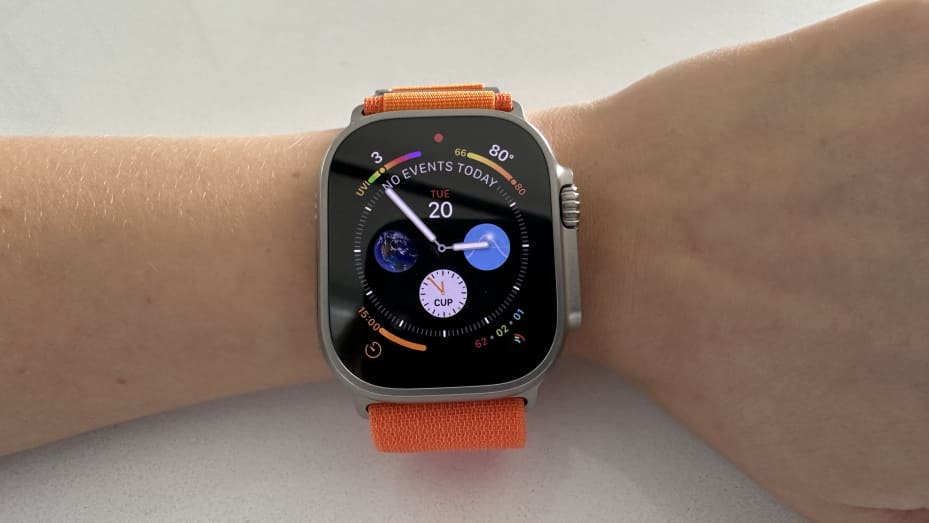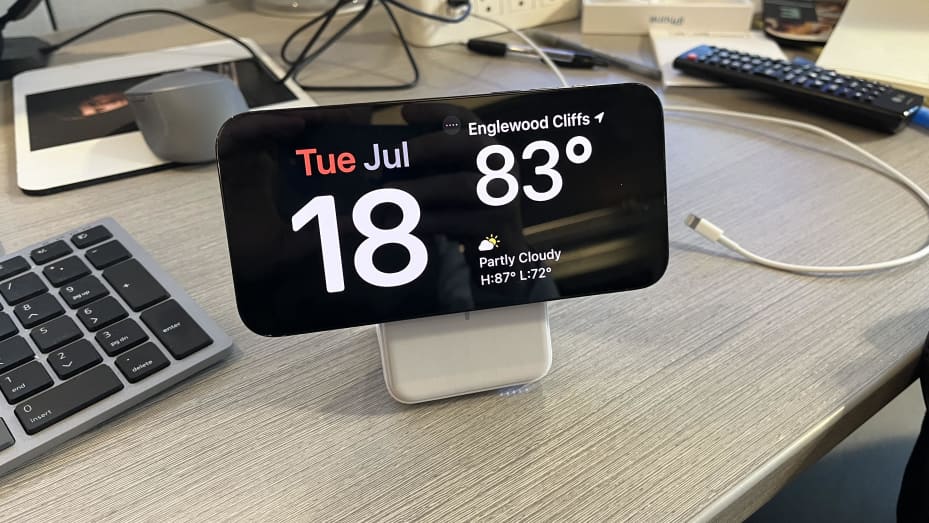
Apple’s iPhone 15 Event Kicks Off on Tuesday. Here’s What To Expect
Apple is holding its most important launch event of the year on Tuesday at its headquarters in Cupertino, California, where it’s expected to unveil new hardware, including the iPhone 15.
Apple will present a prerecorded video featuring company executives to launch the products, which will be streamed on YouTube and Apple’s website. Last year’s event lasted about an hour an a half. Apple has used prerecorded videos for its product showcases since 2020.
Apple’s launches are important for the company and build hype for the products and set the stage for a marketing blitz heading into the December quarter, its biggest sales period of the year. Thirty-one million people have watched Apple’s YouTube video from last year’s launch, revealing that customers still like to get information directly from the company.
This year, the tech giant is hoping the new iPhones can bust a sales slump, fend off renewed competition from Huawei and persuade owners of Android phones to switch.
Apple also announced its new VR headset, the Vision Pro, in June ahead of a planned launch in 2024. The company could provide an update on its efforts to attract developers, but more details about that product are likely not to be released until next year.
Apple’s Macs and iPads are unlikely to see new reveals on Tuesday, given the company usually prefers to give them their own events. Last year, Apple announced new iPads through a press release.
This year’s launch invitations have the tagline “Wonderlust,” although the taglines don’t necessarily preview what the company is announcing. CNBC will be covering the launch live from Apple’s headquarters and with a live blog on CNBC.com.
Last year, Apple announced new iPhones, Apple Watches and updated AirPods at its September event. Here’s what to expect from this year’s edition:
iPhone 15: USB-C and titanium

Apple is expected to release four new iPhone models, continuing the pattern that’s been in place since 2020. If Apple keeps its naming pattern, this year’s models will share the iPhone 15 brand.
Apple is likely to release two sizes of middle-range iPhones, one with a 6.1-inch screen and one with a 6.7-inch screen, as well as two sizes of higher end “Pro” phones with titanium casing and better cameras, according to reports from Bloomberg News, TF International Securities hardware analyst Ming-Chi Kuo and Wall Street analysts.
This year, the biggest change is expected to be a USB-C charging port, replacing Apple’s proprietary Lightning port, which was introduced in 2012 as the iPhone charger “for the next decade.”
A USB-C charging port on iPhones will match the same charging port on Android phones, newer laptops, iPads, wireless headphones and other gadgets.
The change is being spurred by new European regulations which require a common charging port. Apple is unlikely to mention that the change was required by a new law, but it will probably emphasize the positives for users, such as convenience and faster charging. It might also give the port a proprietary Apple marketing name.

New Pro models could also get a titanium casing, replacing the stainless steel used in the past few models. Titanium is lighter than steel, reducing the phones’ total weight. Event invitations show an Apple logo in what looks like a titanium finish.
Lower-end phones — expected to be called simply iPhone 15 — could get an upgrade to what the company calls the “dynamic island,” or a cutout that holds the phone’s facial recognition cameras toward the top of the screen. Last year’s Pro models ditched Apple’s “notch” for the undulating window, which can show real-time updates, such as how far away an Uber is or what’s playing on the music app. The mute switch, which has been present on iPhones for over a decade, could gain new functions as a customizable “action button.”
Apple is also likely to focus on camera and chip improvements as reasons for the upgrade. The biggest and most expensive iPhone model, the bigger Pro, could get a new lens that can zoom with twice the strength as the 3x zoom lens on the iPhone 14 Pro, according to Bloomberg.
One open question is whether Apple will raise price points. Some analysts think so, noting rising costs for parts like memory or processors. However, Apple did not raise U.S. iPhone prices last year under similar conditions. It does tweak its prices around the world regularly after launches and in response to currency fluctuations.
Apple Watch and accessories

Last year, Apple released the Apple Watch Series 8 and a new high-end titanium model called the Ultra in September.
Both are likely to get updates this year, although Apple’s Watches don’t typically get as many major changes from year to year as the iPhones. Apple’s mainstream watches have had the same size and shape since 2018.
The company is likely to upgrade the chip inside the new watches, as well as update its health sensors, according to analysts. But Apple may save bigger changes for the device’s 10th anniversary next year.
Apple also has several accessories that use Lightning connectors, such as some of its AirPod models, Beats headphones, mice and keyboards.
AirPods Pro will get a new feature that doesn’t need new hardware called Adaptive Audio. It uses machine learning and software to intelligently turn down the volume and noise canceling so users can be aware of their immediate surroundings.
Apple will likely update its accessories to work with USB-C, but the updated accessories may not be discussed on Tuesday, or could be released later.
iOS 17

Even users who don’t plan to pick up a new iPhone or Watch will get new software for their devices. Apple previews its latest operating systems for its devices in June, then releases them in September alongside new iPhones.
Many of Apple’s best new features don’t require new hardware and will be available to everyone with an iPhone released since 2018.
Here’s some of what is new in iOS 17:
- The software includes a revamp of the caller ID screen called “contact posters” where users can choose the images that show up when they call other iPhone users.
- Autocorrect has been improved using a transformer-based language model, the same technology underpinning applications like ChatGPT.
- A new Journal app encourages users to save thoughts and feelings on a daily basis and uses on-device machine learning to spot patterns without sending the data to a server in the cloud.
- A new standby dock mode turns your phone into a clock with widgets that can show alarms, appointments or other updating information.
- A business card replacement called NameDrop allows two iPhone users to exchange personal information by tapping their phones together.
- Offline Apple maps make it possible for users to save huge swaths of roads and land to navigate even without cellphone service.